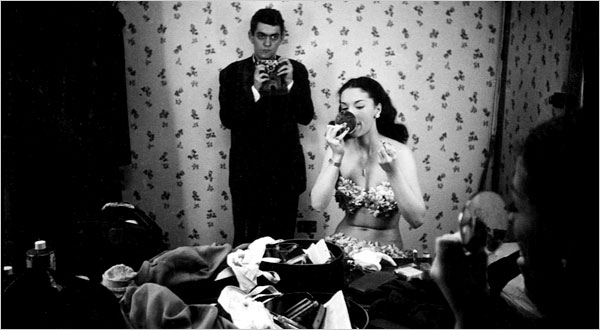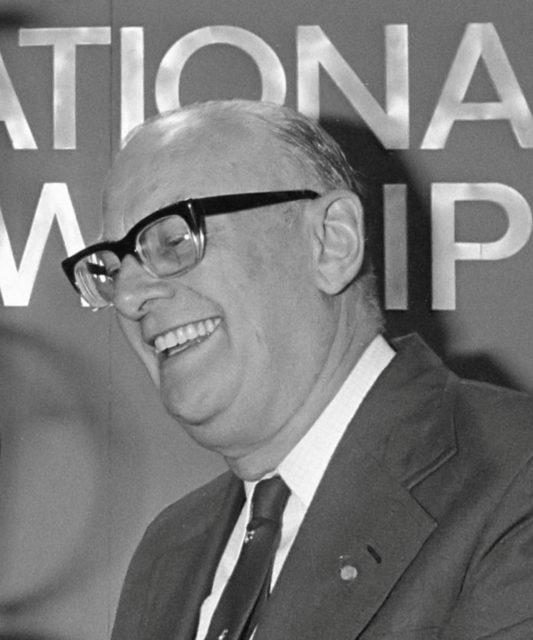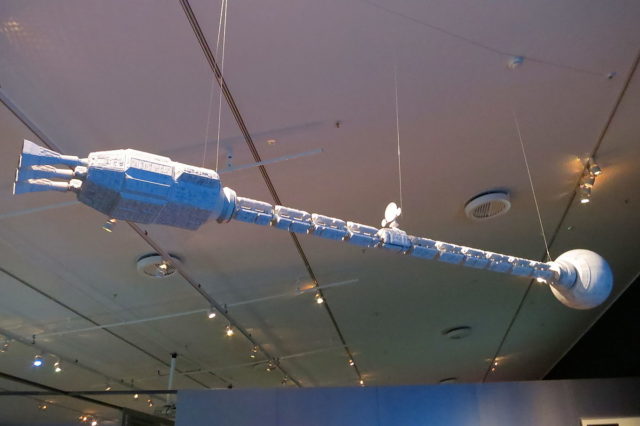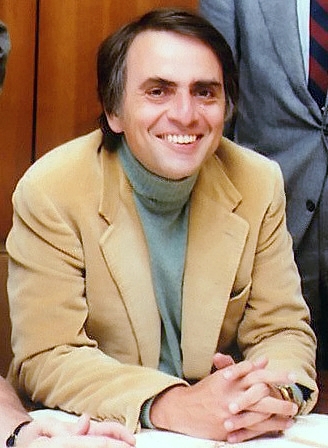Following the conclusion of Dr. Strangelove in 1964, Stanley Kubrick continued to look for new stories for his next film. Among one of his many fascinations was the possibility of extraterrestrial life, so he aimed at creating a good science-fiction movie.
As always, Kubrick was incredibly detailed about the work he did, so he went on to seek for collaborations with people from the science fiction community. He eventually communicated with the writer Arthur C. Clarke.

Although at first Kubrick considered that Clark was “a recluse, a nut who lives in a tree” and Clarke thought that Kubrick was “enfant terrible,” they met in New York on April 22nd, 1964, and began discussing a project which would take the next four years of their lives. That was the beginning of “2001: A Space Odyssey”.
Kubrick told Clarke that he wanted to create a film about “man’s relationship to the universe.” According to Clarke, he was “determined to create a work of art which would arouse the emotions of wonder, awe … even, if appropriate, terror.” The writer offered Kubrick six of his short stories, and by May 1964, the iconic director had chosen “The Sentinel” as a source material upon which the screenplay could be built on.
In the course of the year, the two of them continued to read other books on science and anthropology to develop the film’s plot. They would spend two years transforming “The Sentinel” into a novel, and then into a script for 2001: A Space Odyssey.
Kubrick and Clarke alone referred to the project as “How the Solar System was Won,” but in the first press release which announced the film, the title was “Journey Beyond the Stars. “The project evolved and different sources were added on. For instance, Clarke’s short story Encounter in the Dawn inspired the Dawn of Man sequence. Titles kept on varying as well. At one point the project was called Universe, then Tunnel to the Stars, and Planetfall, until it was fixated as 2001: A Space Odyssey in April 1965. The final title selection was much inspired by Homer’sT Odyssey, or as Kubrick had stated: “it occurred to us that for the Greeks the vast stretches of the sea must have had the same sort of mystery and remoteness that space has for our generation.”

When it came to the topic of extraterrestrial intelligence and how it should be correctly portrayed on the big screen, Kubrick and Clarke sought advice from none other but Carl Sagan. The eminent astronomer has mentioned Clarke and Kubrick in his book The Cosmic Connection which focuses on extraterrestrial intelligence and the likelihood of the existence of other civilizations.

He wrote that Clarke and Kubrick asked for his opinion on how to best depict extraterrestrial intelligence and Sagan further acknowledged Kubrick’s initial urge to portray aliens as humanoids for the sake of convenience. However, Sagan argued that it was questionable if aliens can take any similarity to terrestrial life as we know it and that could inject “at least an element of falseness” to the film. The astronomer also advised that the movie should not depict, but rather suggest extraterrestrial superintelligence.

In a 1968 interview, Kubrick gave hints to the nature of the enigmatic alien race in the film, suggesting that the species have progressed from biological beings to “immortal machine entities,” and then into “beings of pure energy and spirit” following millions of years of evolution. He further depicted them as beings with “limitless capabilities and ungraspable intelligence.”
Kubrick eventually wanted to get an insurance policy to protect himself in case extraterrestrial intelligence was actually discovered before the movie was released. The Lloyds of London had him refused on that matter while Carl Sagan commented that: “In the mid-1960’s, there was no search for extraterrestrial intelligence, and the chances of accidentally stumbling on extraterrestrial intelligence in a few years’ period were extremely small. Lloyds of London had missed a good bet.”
Once the film was released, it performed poor during its first weeks in theaters. This has become a tradition for the majority of Kubrick’s films which at first had staggered but then generate much more in the long run. The film started to attract more and more people indeed, and among the most frequent theatergoers were young adults who were especially interested to see the “Star Gate” sequence under the influence of psychotropic drugs.

The efforts paid off, and 2001: A Space Odyssey became a success. Carl Sagan was satisfied with the final output as well, having commented at that period to be pleased to see that he had helped. 2001: A Space Odyssey was nominated in 13 categories at the 41st Academy Awards in 1969 and won a single Oscar for best visual effects.
The award was given to Stanley Kubrick who had designed much of the look of the film and its effects. At the same time, as the visuals required a significant number of technicians, he considered unfair to receive the sole credit. After this controversy, the Academy changed its eligibility rules.Following the film release, Clark published the novel 2001: A Space Odyssey, as he had simultaneously worked on it during the work on the motion picture.
